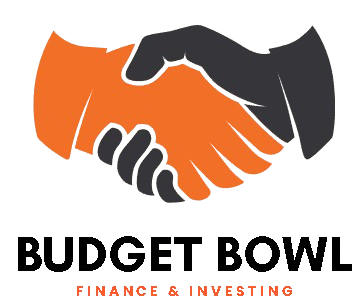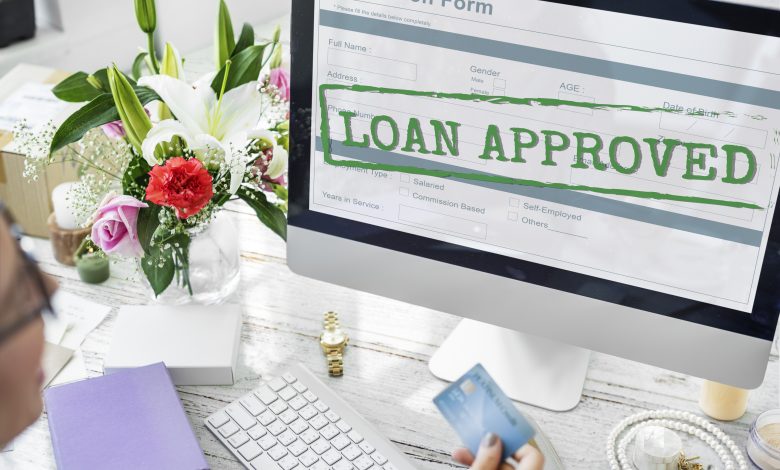Need extra cash? Two popular options are Personal Loan vs Credit Card—but picking the wrong one could cost you hundreds (or even thousands) in extra interest. I’ve helped people with these decisions for years, and I know how tricky it can be.
No complicated finance talk here—just clear, simple info to help you:
- Understand the key differences (interest rates, payments, and fees)
- Avoid common mistakes that cost people money
- Choose the best option for your situation
Let’s break it down—no finance degree needed!
1. What is a Personal Loan?
A personal loan is money you borrow for almost anything—like paying off debt or fixing up your home.
Unlike credit cards, you get the full amount upfront and pay it back in fixed monthly installments.
From my experience helping clients, personal loans work best for one-time expenses with a clear repayment plan.
Common Types of Personal Loans
Here’s a quick comparison of options I often discuss with clients:
| Type | Best For | Key Feature |
|---|---|---|
| Debt Consolidation | Combining multiple debts | Lower interest rates |
| Emergency Loans | Urgent expenses | Fast approval (24-48 hours) |
| Secured Loans | Borrowers with weak credit | Requires collateral |
What to Expect: Rates & Terms
Most borrowers qualify for:
- Interest rates: 6%–36% (depends on credit score)
- Repayment terms: 1–7 years
- Fees: 0%–8% origination fees (always ask!)
Remember, always compare lenders and read the terms carefully! A personal loan can be a great option, but it’s not the right fit for everyone.
2. What is a Credit Card?
A credit card lets you borrow money up to a limit.
If you don’t pay the full balance each month, you’ll owe interest.
I tell my clients to think of credit cards as “short-term loans in your wallet” – useful if managed well, but expensive if not.
Common Credit Card Types
Here’s a quick comparison of cards I frequently discuss with clients:
| Card Type | Best For | Watch Out For |
|---|---|---|
| Rewards Cards | Earners who pay balances monthly | High annual fees |
| Balance Transfer | Those consolidating debt | Short 0% APR periods |
| Secured Cards | Building/rebuilding credit | Required security deposit |
| Student Cards | College students | Lower credit limits |
Understanding Costs
Most credit cards charge 15-25% interest (APR). The minimum payment is just 1-3% of your balance, but paying only that can keep you in debt for years.
Personal Loan vs Credit Card – Key Differences
- Credit cards = revolving credit (you can reuse the limit).
- Personal loans = fixed amounts with set repayment plans.
- Interest rates vary a lot between them.
After 10+ years of coaching, I’ve seen credit cards help build credit if used wisely.
But they aren’t great for long-term borrowing.
That’s where understanding Personal Loan vs Credit Card differences really matters!
3. How Do Personal Loans and Credit Cards Differ?
When helping clients choose between these options, I always start with three crucial comparisons:
1. Interest Rates (What You’ll Pay to Borrow)
| Feature | Personal Loans | Credit Cards |
|---|---|---|
| Typical APR | 6-36% (fixed rate) | 15-25% (variable rate) |
| Best For | Large one-time expenses | Ongoing/repeat purchases |
Personal loans usually offer lower rates, especially for borrowers with good credit. Credit card rates can surprise you if you carry balances.
2. Repayment Structure (How You Pay Back)
| Feature | Personal Loans | Credit Cards |
|---|---|---|
| Payments | Fixed monthly amount | Minimum payment (1-3%) or full balance |
| Term Length | 1-7 years (set end date) | Open-ended (no set payoff date) |
I’ve seen clients benefit from personal loans‘ predictability. Credit cards require more discipline to avoid long-term debt.
3. Credit Score Impact
| Feature | Personal Loans | Credit Cards |
|---|---|---|
| Initial Effect | Small temporary dip | Minor decrease |
| Long-Term | Improves with on-time payments | Helps if kept below 30% limit |
Both can help build credit if used wisely. However, maxing out a credit card hurts your score faster than a personal loan.
Choosing between a personal loan and a credit card depends on your spending habits. Loans are better for big, planned purchases, while credit cards offer more flexibility but need careful handling.
4. Personal Loan vs Credit Card: Key Benefits Compared
When I help clients choose, I keep it simple and break down the benefits clearly. Here’s an easy comparison:
Why Personal Loans Work Well
| Advantage | How It Helps | Best For |
|---|---|---|
| Fixed Repayment | Same payment every month (easy budgeting) | Clients who want predictable costs |
| Lower Rates | Often 6-12% APR (vs 15-25% on cards) for larger amounts | Bigger expenses ($5k+) |
| Debt Consolidation | Combine multiple debts into one payment (simplifies tracking) | Those managing 3+ credit card balances |
When Credit Cards Shine
| Advantage | How It Helps | Best For |
|---|---|---|
| Spending Flexibility | Use anywhere, anytime (no re-application needed) | Everyday purchases |
| Rewards Programs | Earn 1-5% back on groceries, gas, etc. | Responsible spenders (paid monthly) |
| Emergency Funding | Immediate access to funds (unlike loan approvals) | True emergencies (not impulse buys) |
Key Insight From My Experience:
The Personal Loan vs Credit Card choice depends on your goal:
- Loans = Better for planned, large expenses
- Cards = Better for flexible, short-term needs
5. How to Decide Between a Personal Loan and a Credit Card
Deciding whether to go for a personal loan or a credit card depends on your money situation. I’ve helped tons of clients figure this out, and here’s a simple comparison based on real-life examples:
1. Assess Your Financial Situation
| Factor | Personal Loan Better When… | Credit Card Better When… |
|---|---|---|
| Amount Needed | You need $5,000+ | You need under $5,000 |
| Timeframe | Fixed one-time expense | Ongoing flexible needs |
| Credit Score | You have good credit | Building/rebuilding credit |
2. Understand Your Spending Habits
| Spending Style | Loan Advantage | Card Advantage |
|---|---|---|
| Impulse Spender | Fixed payments prevent overspending | Need discipline to avoid debt traps |
| Organized Planner | Predictable repayment schedule | Can maximize rewards if paid monthly |
3. Evaluate Repayment Ability
| Repayment Factor | Loans Work Best If… | Cards Work Best If… |
|---|---|---|
| Income | Steady predictable income | Variable income months |
| Timeline | Can commit to 2-5 year payments | Can pay balance monthly |
| Interest Cost | Want lower fixed APR | Can avoid interest charges |
What I tell my clients:
- Loans are good for bigger, planned expenses (like home repairs).
- Cards are better for short-term needs you can pay off quickly.
- Always check the APR – loans usually cost less in the long run.
The best choice depends on your personal numbers and habits.
6. What Do Studies Say About Budgeting Methods?
Over the years of helping clients, I’ve gone through a lot of studies on what really works for managing money. Here’s what the research says about popular budgeting methods:
Proven Budgeting Strategies
Studies, like those from the National Bureau of Economic Research, show that:
- Zero-based budgeting helps 68% of people cut back on unnecessary spending.
- The 50/30/20 rule is best for keeping long-term budgeting habits.
- Cash-based systems (like using envelopes) help reduce impulse buying by 23% on average.
Debt Management Insights
A 2023 study by the Federal Reserve found that people who track their spending:
- Pay off debt 40% faster
- Are 3x more likely to build emergency savings
- Feel less financial stress
Where to Learn More
If you want to learn more, check out these trusted (but not advisory) resources:
- Consumer Financial Protection Bureau’s budgeting guides
- FDIC’s Money Smart program
- Academic studies on JSTOR
Key Takeaway: There’s no one-size-fits-all method. The most successful budgeters mix tools that fit their goals and personality.
7. How to Use Personal Loans and Credit Cards Responsibly
In my years of helping clients with debt, I’ve learned one thing: borrowing itself isn’t bad, but messing it up is. Whether it’s a personal loan or credit card, these tips can help you stay on top:
Debt Management That Works
- For Credit Cards: Always pay the full balance each month to avoid interest (I’ve seen clients save $500+ a year this way).
- For Personal Loans: Set up auto-payments so you never miss a payment.
- For Both: Don’t borrow more than 20% of your monthly income (clients who stick to this stay stress-free).
Budgeting Is Key
Before taking on any debt, I walk clients through this checklist:
- Do you have a repayment plan?
- Does this fit your current budget?
- Have you compared rates? (Even a 1% lower APR can save you money!)
Where to Learn More
These free resources helped my clients build better habits:
- Consumer Financial Protection Bureau (great guides on loans and credit)
- Nonprofit credit counselors (they offer 1-on-1 help)
- Budgeting apps (to track spending easily)
Remember: Debt is a tool, not the answer to all your problems. Use it wisely, and you can avoid the traps I’ve seen others fall into.
Final Thoughts
We’ve gone over the basics—how credit cards work and how to compare Personal Loan vs Credit Card options. Here’s what I’ve learned from helping clients with these choices:
- Credit cards give you flexibility, but you need discipline to avoid high-interest debt.
- Personal loans are better for bigger, planned expenses with set payments.
- Everyone’s situation is different—what works for one person might not work for someone else.
From what I’ve seen, the best money decisions come from understanding your habits and goals.
If you’re unsure, a quick chat with a financial advisor can help clear things up.
Remember, every smart money decision you make today builds a better tomorrow.
FAQs
Is credit card interest higher than a personal loan?
Yes, almost always. In my 10 years of helping people, I’ve seen credit cards charge 18-25% interest, while personal loans usually charge 8-15%. That’s why saving money fast often starts with paying off those high-interest credit cards first.
Why are loans better?
Loans are usually better because they have:
- Fixed repayment periods
- Lower interest rates
- Clear end dates I recommend loans for big purchases, but make sure you only borrow what you can pay back.
What’s the biggest disadvantage of credit?
The debt trap. A lot of clients come to me paying $300/month just on interest. If you miss payments, your credit score can drop quickly. Always have a plan before using credit.
What are the 5 Cs of credit?
Banks check:
- Character (your history)
- Capacity (income vs debt)
- Capital (your savings)
- Collateral (assets)
- Conditions (why you need the loan) I help clients strengthen these before they apply.
What are the 5 pillars of credit?
Your credit score depends on:
- Payment history (35%)
- Amounts owed (30%)
- Credit age (15%)
- New credit (10%)
- Credit mix (10%) Work on these, and you’ll save thousands on interest!

